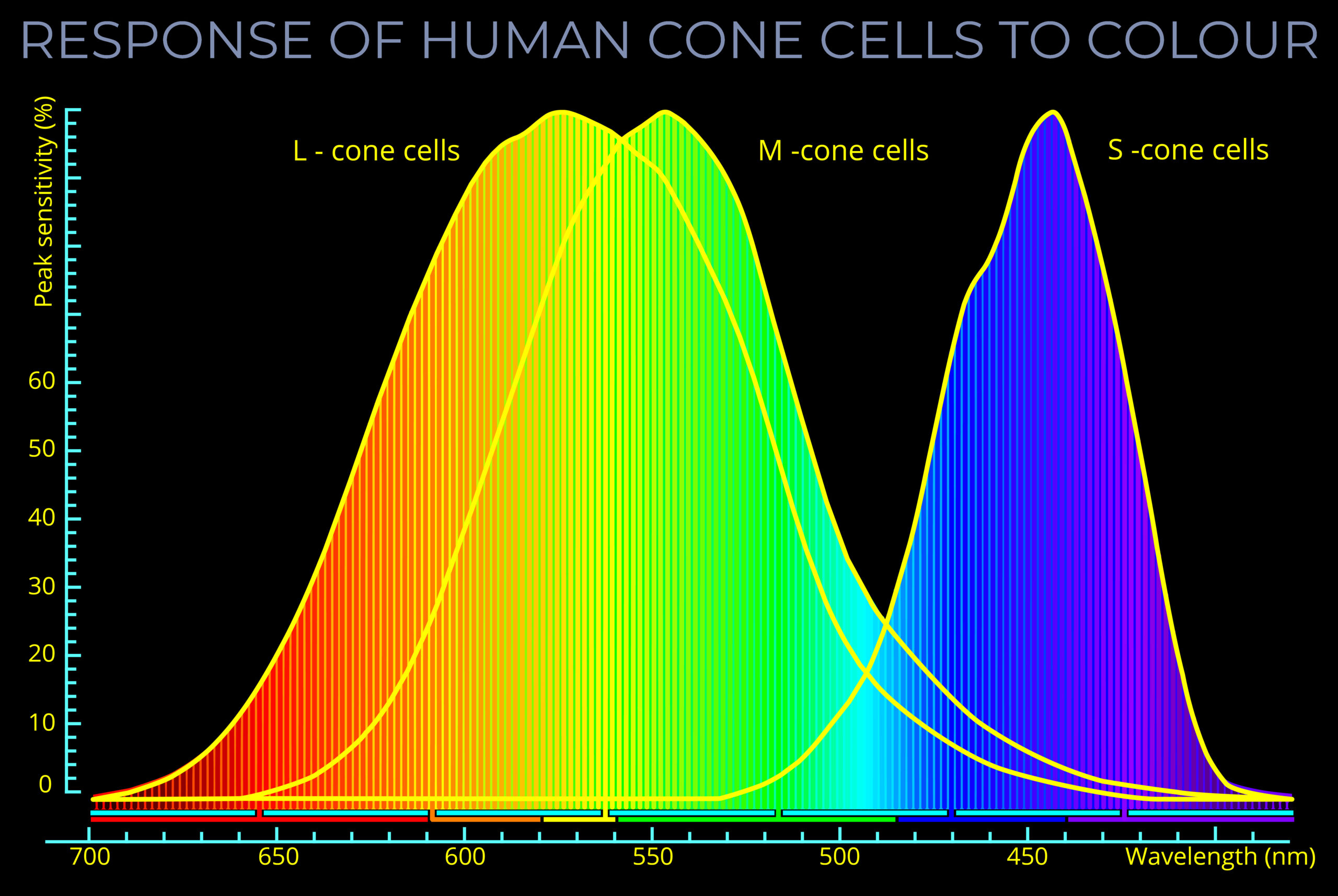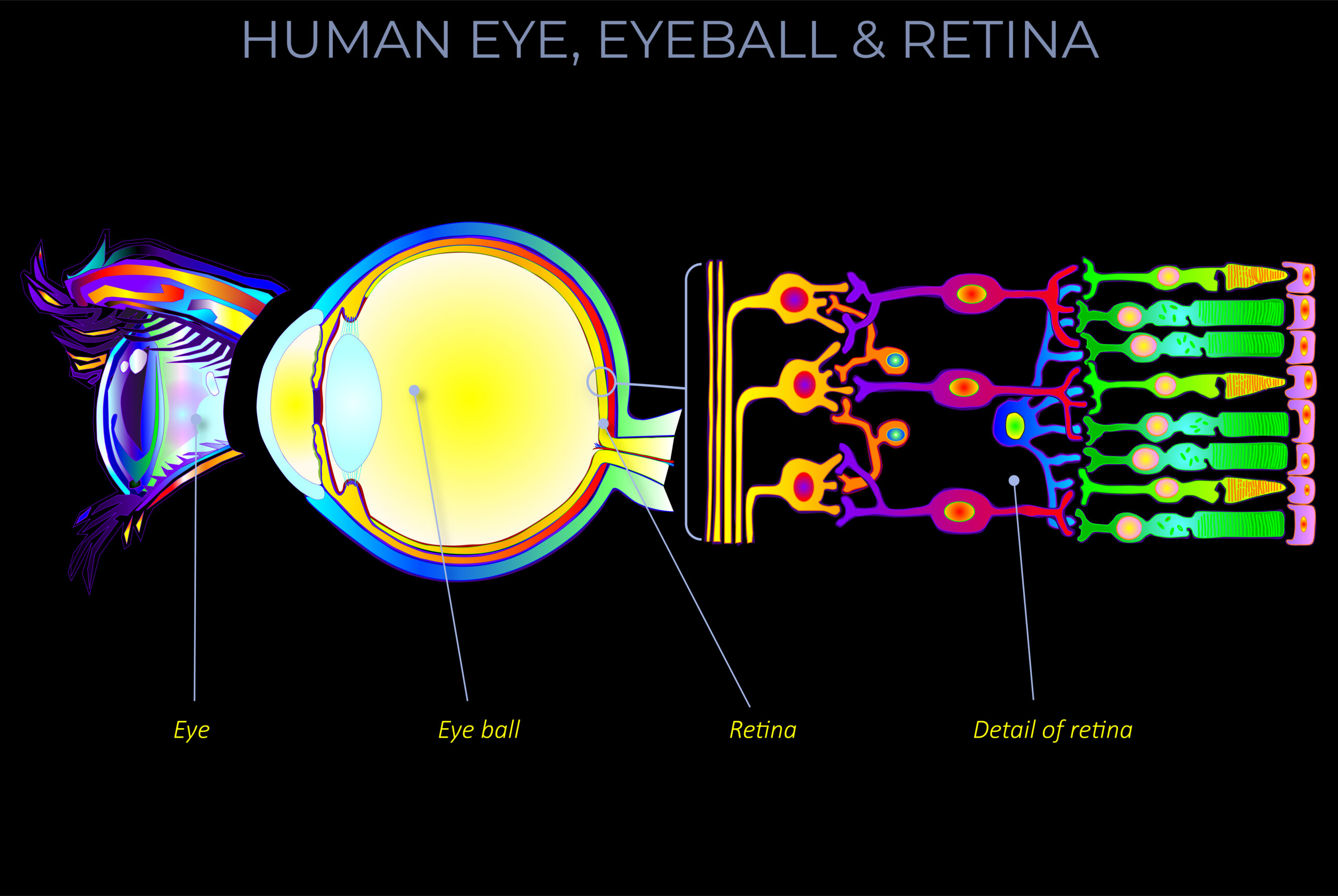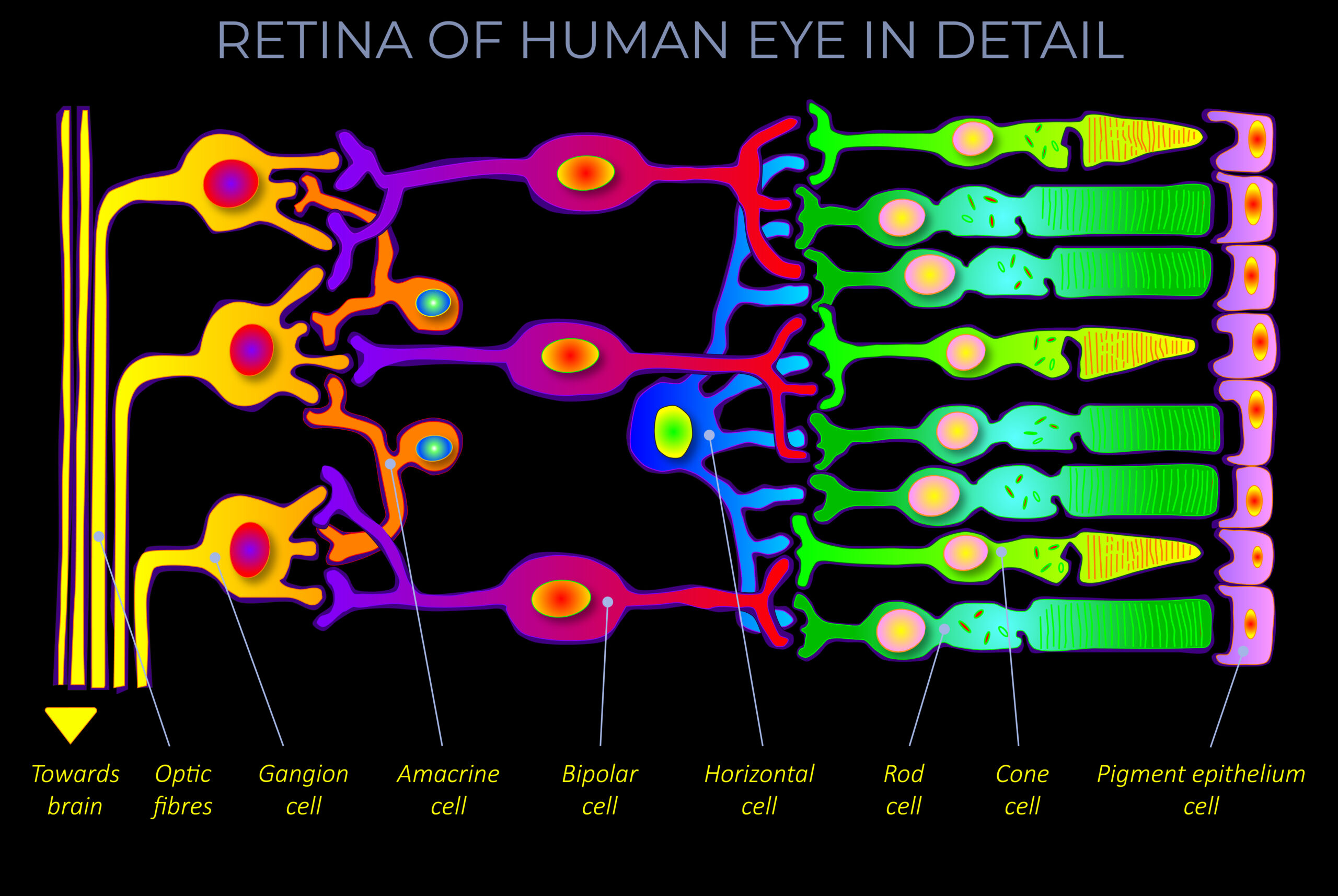- Different organisms respond differently to light stimuli, depending on the presence or absence of specialized light-sensitive cells or photoreceptors.
- Light that enters the human eye and stimulates the visual system is called a visual stimulus.
- The term colour stimulus is used because the light stimulus produces the perception of colour for an observer.
- Every light stimulus can be described in terms of the composition and intensity of wavelengths of light that enter the eye.
- A light stimulus may consist of a combination of red, orange, yellow, green, blue, and violet wavelengths of light. The colour perceived by an observer is influenced not only by the mixture of wavelengths but also by the intensity of light at each wavelength.
- In many cases, the intensity of light varies across a range of wavelengths, and this variation can be described by the spectral power distribution of the stimulus.
- Light stimuli trigger physiological responses in living organisms, such as vision, photosynthesis, and circadian rhythms.
- Different organisms respond differently to light stimuli, depending on the presence or absence of specialized light-sensitive cells or photoreceptors.
- Light that enters the human eye and stimulates the visual system is called a visual stimulus.
- The term colour stimulus is used because the light stimulus produces the perception of colour for an observer.
- Every light stimulus can be described in terms of the composition and intensity of wavelengths of light that enter the eye.
- A light stimulus may consist of a combination of red, orange, yellow, green, blue, and violet wavelengths of light. The colour perceived by an observer is influenced not only by the mixture of wavelengths but also by the intensity of light at each wavelength.
- In many cases, the intensity of light varies across a range of wavelengths, and this variation can be described by the spectral power distribution of the stimulus.


